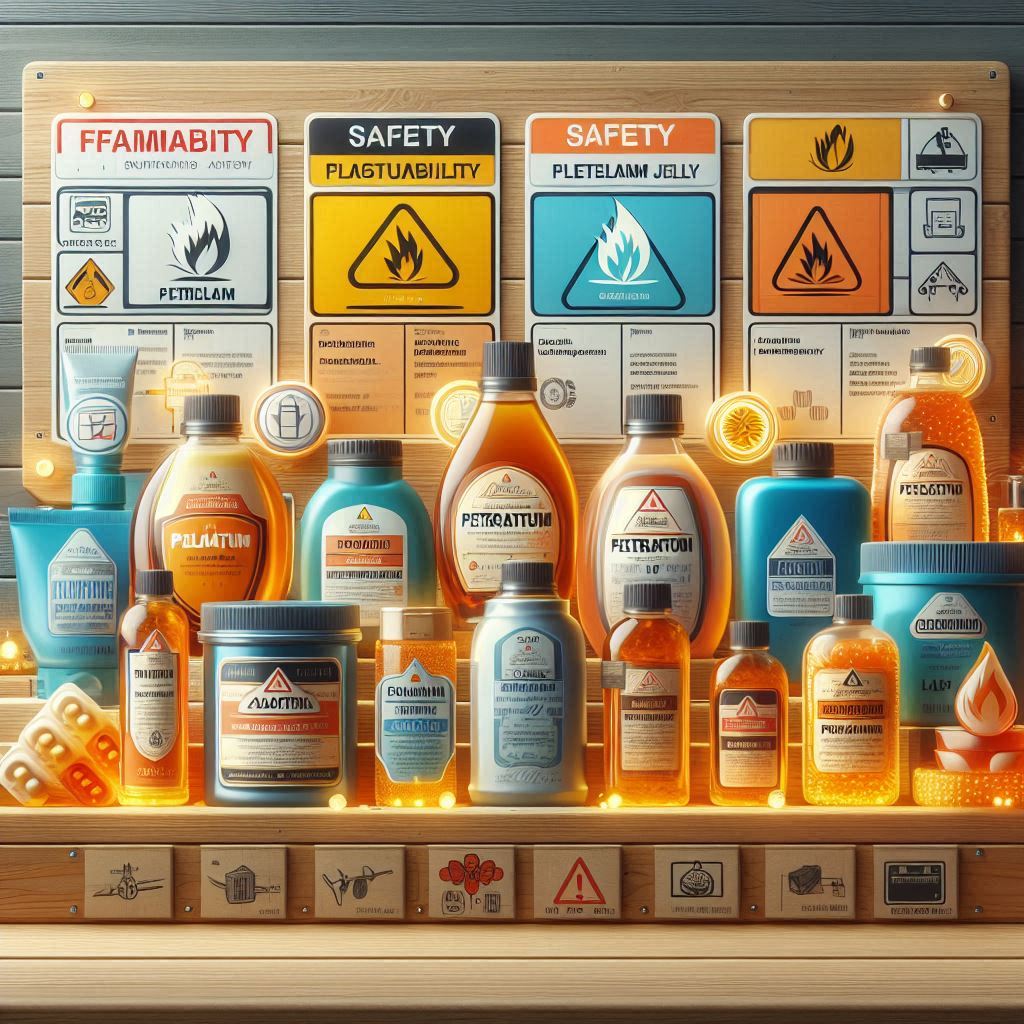
As a firefighter, I’ve encountered my fair share of questions about flammability. One common query that often pops up is whether petroleum jelly is flammable. In this article, I’ll provide you with a straightforward answer backed by my experience in the field. Let’s dive into the science behind this popular household product and its potential fire hazards.
When it comes to safety concerns, knowing the flammability of everyday items is crucial. Petroleum jelly, a staple in many households, raises questions due to its texture and composition. Stay tuned as I debunk myths and provide you with practical insights on handling petroleum jelly around potential fire sources. Let’s separate fact from fiction and ensure you have the right information to keep yourself and your loved ones safe.
Key Takeaways
- Petroleum jelly, while not highly flammable, can ignite under certain conditions due to its flashpoint of around 200°C (392°F).
- Understanding the composition of petroleum jelly, including its hydrocarbons and water-repellent properties, is essential for assessing its flammability near heat sources.
- Myth-busting common misconceptions about petroleum jelly’s flammability is crucial for accurate safety assessment.
- Safety precautions when handling petroleum jelly include avoiding direct heat exposure, using in well-ventilated areas, keeping containers sealed, using non-sparking tools, wearing appropriate protective gear, and educating others on safe handling practices.
Flammability of Petrolatum Products
- Auto-Ignition Temperature:
- Petrolatum has a high auto-ignition temperature, typically above 300°F (149°C). This means it requires significant heat to ignite without an external flame source.
- Flash Point:
- The flash point of petrolatum is generally around 400°F (204°C). This indicates the temperature at which it can emit vapors that may ignite if exposed to a flame or spark.
- Combustibility:
- While petrolatum itself is not easily ignited and doesn’t burn readily, it can ignite under the right conditions, especially if it is heated or exposed to an open flame.
- Vapor Emission:
- Petrolatum products emit very few vapors compared to more volatile substances (like gasoline). This low vapor pressure reduces the risk of flammability in typical environmental conditions.
Exploring Petroleum Jelly Composition
Petroleum jelly, commonly known as Vaseline, is a byproduct of the oil refining process. It is a semi-solid mixture of hydrocarbons, primarily paraffin wax and microcrystalline wax. These hydrocarbons give petroleum jelly its characteristic smooth texture and moisture-sealing properties. As a firefighter, understanding petroleum jelly’s composition is crucial in assessing its flammability near heat sources.
The hydrocarbons in petroleum jelly make it a combustible substance. While it is not considered highly flammable, it can ignite under certain conditions. The flash point of petroleum jelly, the temperature at which it can produce enough vapor to ignite in the presence of a spark or flame, is around 200°C (392°F). This temperature is lower than that of many other household items, highlighting the importance of handling it with care around potential ignition sources.
Additionally, petroleum jelly is insoluble in water but can create a barrier that prevents skin moisture loss. This water-repellent property is one reason why it is widely used in skincare products. However, this same property can also affect its flammability since water is often used to extinguish fires. Understanding how petroleum jelly’s composition interacts with different extinguishing agents is fundamental in firefighting scenarios.
In firefighting situations, knowing the properties of materials like petroleum jelly is essential for making informed decisions to ensure the safety of individuals and effectively manage potential hazards.
Understanding Flammability and Flashpoints
When it comes to petroleum jelly, it’s essential to understand its flammability and flashpoints. As a firefighter, I know that even though petroleum jelly is not highly flammable, it can ignite under specific conditions. The flash point of petroleum jelly is around 200°C (392°F), which means it can catch fire when exposed to temperatures at or above this point.
In my line of work, knowing the flashpoint of substances like petroleum jelly is crucial. This knowledge helps us assess the risks involved and take the necessary precautions during firefighting operations. Petroleum jelly may not ignite as easily as some other flammable materials, but under the right circumstances, it can pose a fire hazard.
As a firefighter, understanding how petroleum jelly behaves near heat sources is vital for our safety and the safety of others. We need to be aware of its flammability characteristics to effectively manage any potential hazards that may arise. This knowledge allows us to make informed decisions on the ground and respond appropriately in emergency situations.
Myth Busting: Common Misconceptions
When it comes to petroleum jelly and its flammability, there are several common misconceptions that I encounter. Let’s address a few of these misconceptions:
- Misconception 1: Some people believe that petroleum jelly is highly flammable and should be handled with extreme caution near any heat source. In reality, as mentioned earlier, petroleum jelly has a flashpoint of approximately 200°C (392°F), which means it requires a relatively high temperature to ignite.
- Misconception 2: Another common myth is that petroleum jelly can easily catch fire when exposed to sparks. While it’s essential to be cautious, everyday sparks from activities like lighting a match or a cigarette are typically not significant enough to ignite petroleum jelly.
- Misconception 3: There is a misconception that petroleum jelly will quickly melt and catch fire when near an open flame. Understanding the properties of petroleum jelly is crucial here; while it can melt at low temperatures, it doesn’t readily ignite unless exposed to a flame for an extended period.
Dispelling these misconceptions is vital for ensuring that firefighters have an accurate understanding of how petroleum jelly behaves in different situations.
Safety Precautions When Handling Petroleum Jelly
When it comes to handling petroleum jelly, it’s crucial to prioritize safety to minimize any potential risks. Here are some key precautions to keep in mind:
- Avoid direct heat exposure: I always make sure to store petroleum jelly away from sources of direct heat or open flames to prevent any accidents.
- Use in well-ventilated areas: When working with petroleum jelly, I recommend ensuring good ventilation in the surroundings to reduce the risk of combustion.
- Keep containers tightly sealed: It’s essential to keep containers of petroleum jelly tightly closed when not in use to prevent any unintentional exposure to ignition sources.
- Use non-sparking tools: When handling petroleum jelly, opt for non-sparking tools to avoid any sparks that could potentially lead to a fire.
- Wear appropriate protective gear: I always prioritize safety by wearing gloves and other appropriate protective gear when handling petroleum jelly to protect myself from any potential hazards.
- Educate others: It’s important to educate those around you about the safe handling practices of petroleum jelly to ensure a secure working environment for everyone involved.
Spills: In the event of a spill, clean it up immediately to prevent slipping hazards and minimize the chance of a fire if exposed to ignition sources.
Storage: Store petrolatum jelly products away from direct heat sources, open flames, and high-temperature environments to minimize the risk of ignition.
Handling: When using petrolatum products, avoid exposing them to extreme heat. Always ensure that the area is well-ventilated, especially during extensive use.
Conclusion
Handling petroleum jelly safely is crucial to prevent potential fire hazards. By implementing safety precautions like avoiding direct heat exposure, ensuring proper ventilation, sealing containers tightly, using non-sparking tools, wearing protective gear, and educating others, the risks can be minimized. It’s essential to prioritize safety when working with petroleum jelly to maintain a secure environment.
Frequently Asked Questions
Is petroleum jelly highly flammable?
Petroleum jelly itself is not highly flammable. However, it can catch fire if exposed to direct heat sources like flames or hot surfaces.
What safety precautions should be taken when handling petroleum jelly?
When handling petroleum jelly, ensure good ventilation, keep containers tightly sealed, avoid direct heat exposure, use non-sparking tools, wear appropriate protective gear, and educate others about safe handling practices.
How can risks associated with handling petroleum jelly be minimized?
By diligently following safety precautions such as avoiding heat exposure, ensuring ventilation, using proper tools, wearing protective gear, and educating others, the risks associated with handling petroleum jelly can be significantly reduced.
